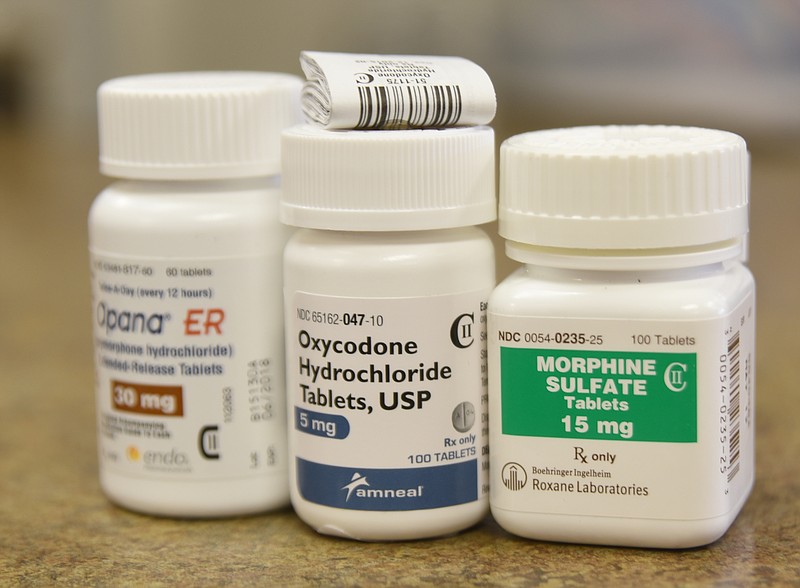Chattanooga, Jackson, and the Bristol-Kingsport-Johnson City area are among the worst 25 cities in the U.S. for opioid prescription abuse, according to a new study by a health information company.
Wilmington, N.C., had the worst prescription opioid abuse problem, with 11.6 percent of those receiving prescriptions abusing them, according to Castlight Health, the San Francisco-based company that did the survey, using insurance claims data for a five-year period from 2010 through the end of 2015.
Meanwhile, the Tennessee State Senate passed a bill Tuesday that would require all pain treatment clinics that prescribe opioids to be licensed and receive regular inspections.
Opioids include drugs such as OxyContin, Percocet, and Vicodin, given to reduce pain. Prescriptions for opioids soared nearly 400 percent between 1999 and 2010, and some 16,000 people died from drug overdoses associated with the painkillers, according to the federal Centers for Disease Control and Prevention.
Tennessee already requires doctors who prescribe opioids to enter them into a statewide database and also check to see if the patient has already received a prescription from another doctor. A key provision of the state Senate bill authorizes the state Department of Health to conduct unannounced inspections whenever there is a reasonable suspicion a pain clinic is operating without a license.
The Castlight study focused on the cost of opioid abuse to employers, and therefore only looked at people who were insured by their employers. The researchers defined a prescription abuser as someone who received a prescription for opioids for more than 90 days and also had received prescriptions from four different doctors during the five-year period.
Using those criteria, the Bristol-Kingsport-Johnson City area had an abuse rate of 8.6 percent, ninth-worst in the U.S. Chattanooga and Jackson ranked 20th in the country, with a rate of 7.7 percent.
Twenty-two of the top 25 cities for opioid abuse are in the Southeast and many are in rural areas, according to the study.
Among the report's other conclusions:
* Most of the abuse is concentrated in a small percentage of overall opioid users. About 4.5 percent of those who have received an opioid prescription are abusers, Castlight concluded, but they account for 32 percent of all opioid prescriptions and 40 percent of all opioid prescription spending.
"It's definitely a small number who are driving opioid use," Dr. Chris Whaley, a healthcare economist at the University of California-Berkeley who led the survey, said in an interview Tuesday. "The other 95 percent account for a much smaller share."
* Opioid prescription abusers cost their employers much more in annual health care costs than non-abusers, $19,450 compared to $10,853.
* Patients with a behavioral health diagnosis of any kind were three times more likely to abuse opioids than those without such a diagnosis. Providing better mental health care to those employees would help reduce opioid abuse, Whaley said. "Anything we can do to address these underlying conditions is a first step," he said.
Contact staff writer Steve Johnson at sjohnson@timesfreepress.com, 423-757-6673, on Twitter @stevejohnsonTFP, or on Facebook, www.facebook.com/noogahealth.
